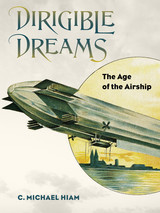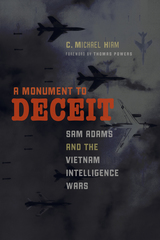2 books by Hiam, C. Michael

Dirigible Dreams
The Age of the Airship
C. Michael Hiam
University Press of New England, 2014
Here is the story of airships—manmade flying machines without wings—from their earliest beginnings to the modern era of blimps. In postcards and advertisements, the sleek, silver, cigar-shaped airships, or dirigibles, were the embodiment of futuristic visions of air travel. They immediately captivated the imaginations of people worldwide, but in less than fifty years dirigible became a byword for doomed futurism, an Icarian figure of industrial hubris. Dirigible Dreams looks back on this bygone era, when the future of exploration, commercial travel, and warfare largely involved the prospect of wingless flight. In Dirigible Dreams, C. Michael Hiam celebrates the legendary figures of this promising technology in the late nineteenth and early twentieth centuries—the pioneering aviator Alberto Santos-Dumont, the doomed polar explorers S. A. Andrée and Walter Wellman, and the great Prussian inventor and promoter Count Ferdinand von Zeppelin, among other pivotal figures—and recounts fascinating stories of exploration, transatlantic journeys, and floating armadas that rained death during World War I. While there were triumphs, such as the polar flight of the Norge, most of these tales are of disaster and woe, culminating in perhaps the most famous disaster of all time, the crash of the Hindenburg. This story of daring men and their flying machines, dreamers and adventurers who pushed modern technology to—and often beyond—its limitations, is an informative and exciting mix of history, technology, awe-inspiring exploits, and warfare that will captivate readers with its depiction of a lost golden age of air travel. Readable and authoritative, enlivened by colorful characters and nail-biting drama, Dirigible Dreams will appeal to a new generation of general readers and scholars interested in the origins of modern aviation.
[more]

A Monument to Deceit
Sam Adams and the Vietnam Intelligence Wars
C. Michael Hiam
University Press of New England, 2014
It was an enigma of the Vietnam War: American troops kept killing the Viet Cong—and being killed in the process—and yet their ranks continued to grow. When CIA analyst Sam Adams uncovered documents suggesting a Viet Cong army more than twice as large as previously reckoned, another war erupted, this time within the ranks of America’s intelligence community. Although originally clandestine, this conflict involving the highest levels of the U.S. government burst into public view during the acrimonious lawsuit Westmoreland v. CBS. The central issue in the suit, as in the war itself, was the calamitous failure of U.S. intelligence agencies to ascertain the strength of the Viet Cong and get that information to troops in a timely fashion. The legacy of this failure—whether caused by institutional inertia, misguided politics, or individual hubris—haunts our nation. In the era of Chelsea Manning, Julian Assange, and Edward Snowden, Sam Adams’ tireless crusade for “honest intelligence” resonates strongly today.
[more]
READERS
Browse our collection.
PUBLISHERS
See BiblioVault's publisher services.
STUDENT SERVICES
Files for college accessibility offices.
UChicago Accessibility Resources
home | accessibility | search | about | contact us
BiblioVault ® 2001 - 2024
The University of Chicago Press









